
The Rolls-Royce Pegasus, formerly the Bristol Siddeley Pegasus, is a British turbofan engine originally designed by Bristol Siddeley. It was manufactured by Rolls-Royce plc. The engine is not only able to power a jet aircraft forward, but also to direct thrust downwards via swivelling nozzles. Lightly loaded aircraft equipped with this engine can manoeuvre like a helicopter. In particular, they can perform vertical takeoffs and landings. In US service, the engine is designated F402.

The Rolls-Royce Turbomeca RTM322 is a turboshaft engine produced by Safran Helicopter Engines. It was originally conceived and manufactured by Rolls-Royce Turbomeca Limited, a joint venture between Rolls-Royce plc and Turbomeca. The engine was designed to suit a wide range of military and commercial helicopter designs. The RTM322 can also be employed in maritime and industrial applications.

The Rolls-Royce Olympus was the world's second two-spool axial-flow turbojet aircraft engine design, first run in May 1950 and preceded only by the Pratt & Whitney J57, first-run in January 1950. It is best known as the powerplant of the Avro Vulcan and later models in the Concorde SST.

The LHTEC T800 is a turboshaft engine for rotary wing applications. It is produced by the LHTEC, a joint venture between Rolls-Royce and Honeywell. The commercial and export version is the CTS800. The engine was primarily developed for the United States Army's cancelled RAH-66 Comanche armed reconnaissance helicopter, but has found use in other applications.

The Rolls-Royce RB.53 Dart is a turboprop engine designed and manufactured by Rolls-Royce Limited. First run in 1946, it powered the Vickers Viscount on its maiden flight in 1948. A flight on July 29 of that year, which carried 14 paying passengers between Northolt and Paris–Le Bourget Airport in a Dart-powered Viscount, was the first regularly scheduled airline flight by a turbine-powered aircraft. The Viscount was the first turboprop-powered aircraft to enter airline service - British European Airways (BEA) in 1953.
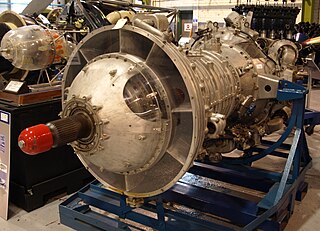
The Rolls-Royce RB.39 Clyde was Rolls-Royce's first purpose-designed turboprop engine and the first turboprop engine to pass its civil and military type-tests.

The Napier Gazelle is a turboshaft helicopter engine that was manufactured by D. Napier & Son in the mid-1950s. In 1961 production was nominally transferred to a joint venture with Rolls-Royce called Napier Aero Engines Limited. But the venture closed two years later.

The Bristol Orion aero engine was a two-shaft turboprop intended for use in later marks of the Bristol Britannia and the Canadair CL-44. Although the engine was built and underwent a development program, the BE.25 Orion project was cancelled in 1958 by the British Ministry of Supply in favour of the Rolls-Royce Tyne. In addition, interest in turboprop-powered aircraft was beginning to wane, because of the successful introduction of the Boeing 707 and Douglas DC-8 jetliners into airline service.
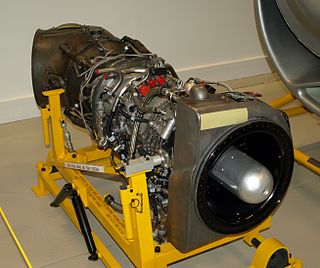
The Rolls-Royce Gnome is a British turboshaft engine originally developed by the de Havilland Engine Company as a licence-built General Electric T58, an American mid-1950s design. The Gnome came to Rolls-Royce after their takeover of Bristol Siddeley in 1968, Bristol having absorbed de Havilland Engines Limited in 1961.

The Bristol Siddeley BS.100 is a British twin-spool, vectored thrust, turbofan aero engine that first ran in 1960. The engine was designed and built in limited numbers by Bristol Siddeley Engines Limited. The project was cancelled in early 1965.
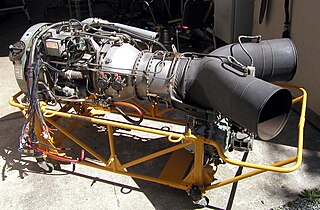
The Bristol Siddeley Nimbus, later known as the Rolls-Royce Nimbus, was a British turboshaft engine developed under license by Blackburn Aircraft Ltd. from the Turbomeca Turmo in the late 1950s. It was used on the Westland Scout and Westland Wasp helicopters.

The Allison Model 250, now known as the Rolls-Royce M250, is a highly successful turboshaft engine family, originally developed by the Allison Engine Company in the early 1960s. The Model 250 has been produced by Rolls-Royce since it acquired Allison in 1995.
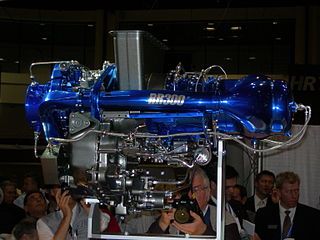
The Rolls-Royce RR300 is a turbine aircraft engine (turboshaft/turboprop) developed for the light helicopter/general aviation market. Rated at up to 300 shp (224 kW) at take-off power, the RR300 is a rebadged and downrated variant of the Rolls-Royce Model 250-C20.

The Turbomeca Astazou is a highly successful series of turboprop and turboshaft engines, first run in 1957. The original version weighed 110 kg (243 lb) and developed 240 kW (320 shp) at 40,000 rpm. It was admitted for aviation service on May 29, 1961, after a 150-hour test run. The main developing engineer was G. Sporer. It was named after two summits of the Pyrenees.
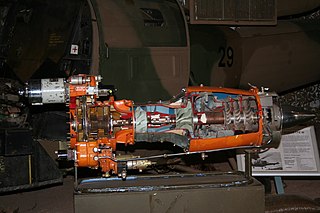
The Turbomeca Artouste is an early French turboshaft engine, first run in 1947. Originally conceived as an auxiliary power unit (APU), it was soon adapted to aircraft propulsion, and found a niche as a powerplant for turboshaft-driven helicopters in the 1950s. Artoustes were licence-built by Bristol Siddeley in the UK, Hindustan Aeronautics Limited in India, and developed by Continental CAE in the US as the Continental T51. Two major versions of the Artouste were produced. The Artouste II family, mainly used in the Aérospatiale Alouette II helicopter, had a one-stage centrifugal compressor and a two-stage turbine, with gearbox-limited power of 300 kW (400 hp). The Artouste III family, mainly used in Aérospatiale's Alouette III and Lama helicopters, had a two-stage axial-centrifugal compressor and a three-stage turbine, with gearbox-limited power of 420–440 kW (560–590 hp).

The Turbomeca Turmo is a family of French turboshaft engines manufacturered for helicopter use. Developed from the earlier Turbomeca Artouste, later versions delivered up to 1,300 kW (1,700 shp). A turboprop version was developed for use with the Bréguet 941 transport aircraft.

The Turbomeca Makila is a family of French turboshaft engines for helicopter use, first run in 1976 and flown in 1977.
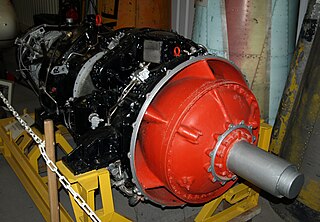
The Napier Eland was a British turboshaft or turboprop gas-turbine engine built by Napier & Son in the early 1950s. Production of the Eland ceased in 1961 when the Napier company was taken over by Rolls-Royce.

The General Electric T64 is a free-turbine turboshaft engine that was originally developed for use on helicopters, but which was later used on fixed-wing aircraft as well. General Electric introduced the engine in 1964. The original engine design included technical innovations such as corrosion resistant and high-temperature coatings. The engine features a high overall pressure ratio, yielding a low specific fuel consumption for its time. Although the compressor is all-axial, like the earlier General Electric T58, the power turbine shaft is coaxial with the HP shaft and delivers power to the front of the engine, not rearwards. Fourteen compressor stages are required to deliver the required overall pressure ratio. Compressor handling is facilitated by 4 rows of variable stators. Unlike the T58, the power turbine has 2 stages.
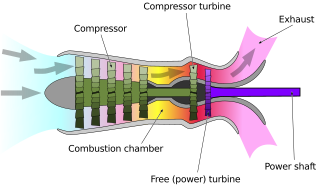
A free-turbine turboshaft is a form of turboshaft or turboprop gas turbine engine where the power is extracted from the exhaust stream of a gas turbine by an independent turbine, downstream of the gas turbine. The power turbine is not mechanically connected to the turbines that drive the compressors, hence the term "free", referring to the independence of the power output shaft. This is opposed to the power being extracted from the turbine/compressor shaft via a gearbox.





















